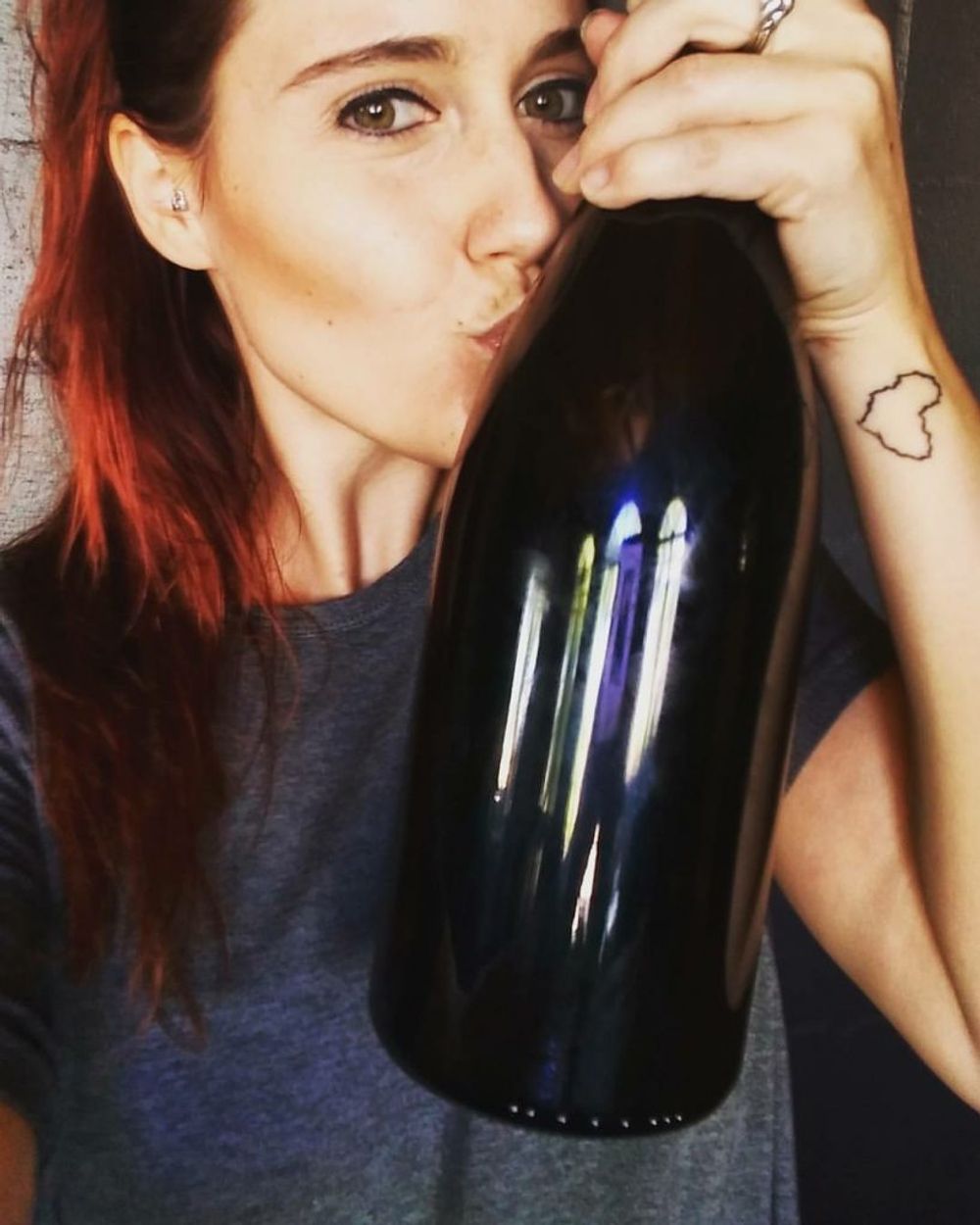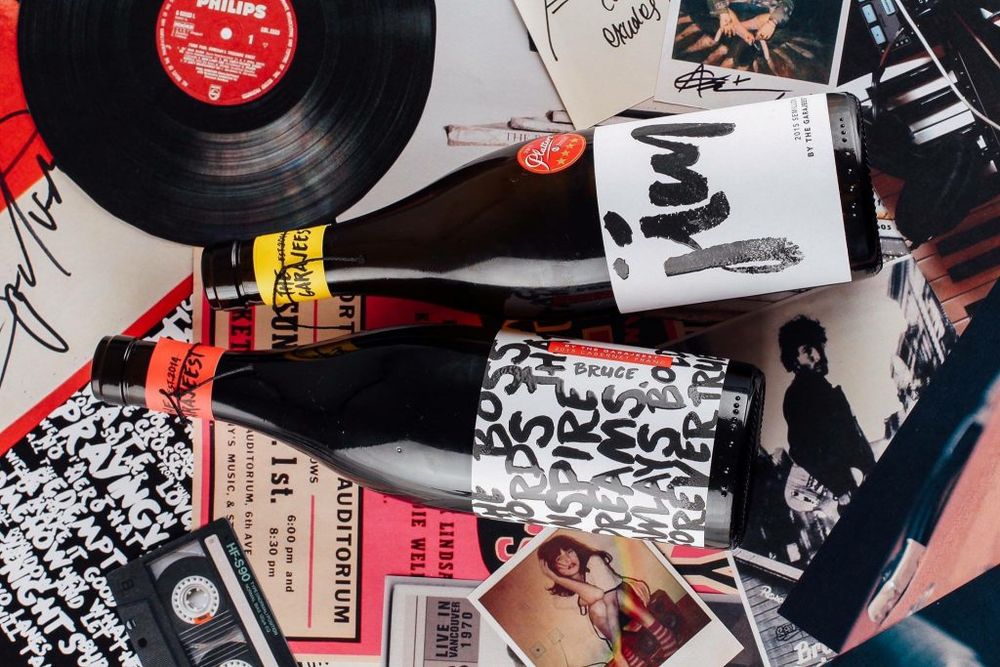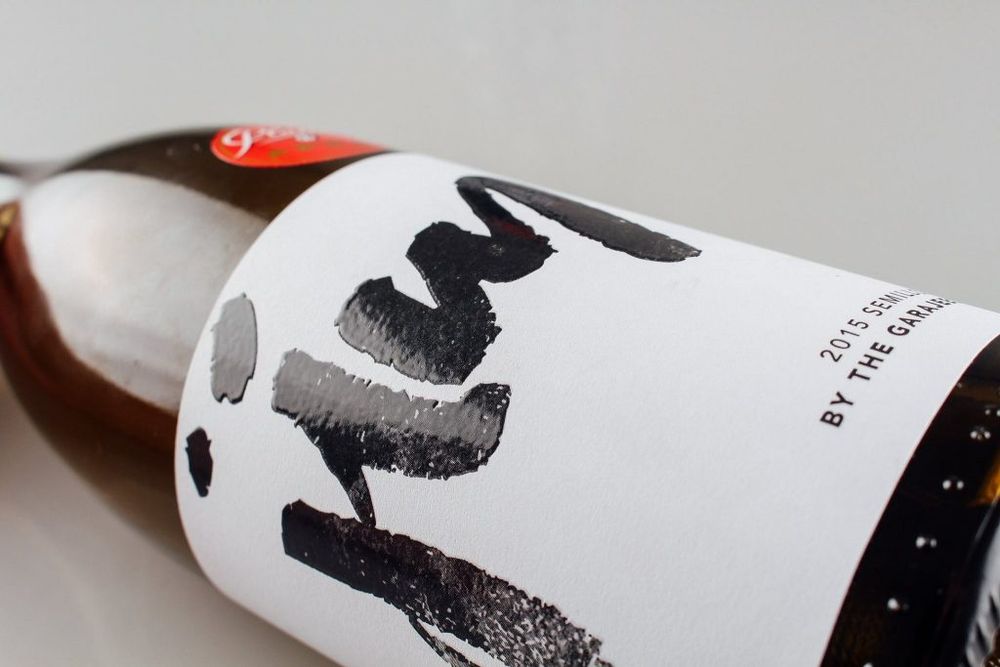How Callan Williams is using as modern an approach to PR and social media as she it so making wine that importer Nik Darlington believes is some of the most exciting being made in South Africa.
There are lots of ways to get your wines noticed. Pitch up at a trade show. Go knocking on doors. Call up importers. Write to importers. Submit bottles to competitions. Get a wine critic to write them up.
Or create a fucking cool Instagram profile. If you’re small, lacking funds but bursting with ideas and a visually appealing product, it’s not a bad place to start. Social media is free, for starters. And while it’s just one big echo chamber, wine’s echo chamber is small, so you’ve got a good chance of being spotted. This is #winelovers not #kardashians after all.
South African wine collective De Kleine Wijn Koöp (transl, The Little Wine Co-op) kicked off their whole gig on Instagram, using an eye for a good shot, niche wines and cool packaging to attract a young audience to their online shop. Comprising a couple of the country’s hottest label designers, a journalist, a videographer and a winemaker, they had all the skills for it.
Those oaks might be pros, but just applying a Juno filter isn’t rocket science. You don’t have to be an expert; just see our own hodgepodge of bottles and landscapes at Red Squirrel, by a proud runner-up in the Year 8 photography prize.
Getting started

Callan Williams: remember the name, remember the wines
Cutting to the chase: this is how I came across Callan Williams and her new Garajeest label, which has its UK debut next week at the London Wine Fair.
I was in Adelaide visiting another bloke with a pretty good Instagram profile – Dave Bowley aka Vinteloper – and scrolling absent-mindedly when via a mate in South Africa, up popped the Garajeest. A profile full of rock stars, a twenty-something winemaker, piles of grapes, winery tanks, and a pair of very attractive, grungy graffiti adorned bottles.
A few messages exchanged and some weeks later, at the end of February, I was driving down an unmetalled track near Somerset West, on my way to see and try things for myself. I spend about a month every year in South Africa, harvesting, catching up with friends, seeing what’s new, so the timing was perfect.
Callan’s wines looked great, but how did they taste? We get a lot of bottles put under our noses and we’ll invariably get more excited about the cool labels (forgive us, we’re human), but hell hath no fury like a wine merchant thwarted by a rubbish wine in hot packaging.
Without ruining the ending, safe to say we weren’t disappointed.
“The wines were only released this month, and I’m a one-woman operation. So I’ve been juggling harvest, tastings, events, marketing, taking my dogs for a run and buying groceries!”
Zimbabwe-born Callan Williams doesn’t stand still. She set up on her own with the Garajeest in 2014 after stints as assistant winemaker at Iona, and work experience at Villiera while completing her training at Elsenburg. She also worked at Elgin Ridge helping with its social media and doing some cellar work. Meanwhile, she also leads the Garagiste Movement of South Africa.
And prior to all this, she’d been on the verge of a career as a ballet dancer: “I hung up my pointy shoes in exchange for vellies.”
How many winemakers do you know who can say that?
All down to music

Wines to inspire Nick Hornby for High Fidelity Part 2?
“The Garajeest is wine inspired by music,” she explains as she pours out a glass of the debut 2015 vintage of Jim Semillon.
Callan’s social media postings are peppered with revealing song lyrics. “As soon as you’re born they make you feel small, by giving you no time, instead of it all.” John Lennon. “I’m just looking for an angel with a broken wing.” Jimmy Page.
The Garajeest is a brand that’s very edgy, passionate, at times dark but mostly optimistic. I wondered whether there’s an aspect of autobiography about it?
“The Garajeest is a brand that best represents me and the music I love. Music unites us all in our diversities, and I believe food and wine have the power to do so as well,” she replies.
Critics’ choice

Here’s one for you…Jim…
What’s more the wines have already been well received in South Africa, against some serious competition and discerning critics.
Four stars from Platter’s for Jim Semillon, which has also been named one of the top 20 Semillons in the country, alongside established, lionised names like Alheit, Boekenhoutskloof, Landau du Val, Cederberg, David & Nadia Sadie, Steenberg, Thorne & Daughters, Vergelegen, and relative newcomers such as our good friends at Black Elephant Vintners.
Meanwhile Bruce Cabernet Franc was a silver medallist in the South African Cabernet Franc Carnival 2017.
And the Garajeest won the People’s Choice Award for most popular packaging at this year’s South African Wine Label Design Awards.
“In it’s short time on the market, I think the brand is doing exceptionally well and has caused a stir in South Africa,” added Williams. “I’m not a believer in entering competitions, but the accolades are building up and the wines talk for themselves.”
So who’s buying them? “I’ve seen a diverse range of customers, from hipster types to house wives, music enthusiasts to high-end restaurants and boutique wine stores, a lot of wine critics,” says Williams. “I believe the brand will sell itself, but the wine inside keeps people returning.”
Championing Semillon and Cab Franc
Semillon and Cabernet Franc are hardly notable in the Cape, certainly not as straight varietals. They’re neither obscure enough to be super sexy – like Marelise Niemann’s Tinta Barocca, Pieter Walser’s Fernão Pires, or Craig Hawkins’ Hárslevelü – nor traditional and bankable like Chenin Blanc, Syrah or from the Elgin vantage point, Pinot Noir. So why choose them?
“I chose Semillon and Cabernet Franc for no other reason than they’re my favourite grapes,” she says. “And I wanted to make my favourite grapes straight and in styles I love, because why not?”
And why the names Bruce and Jim? Are they musicians?
“Not telling, you work it out.”
That’s a starter for ten…
Cutting through

It’s her approach to social media and Instagram in particular that has helped Callan Williams build up an underground following
There’s a powerful school of thought that says wine shouldn’t be judged by the label. That plenty of pretty photos don’t a great wine make. That social media is a black hole, and the younger generation shouldn’t be courted either because they’re not listening or that isn’t ultimately where the money is anyway. Easier and less traumatic to plump for recognisable names, regions, grapes and images.
But it’s a tough market. A golden age of wine means there’s never been so much high quality wine out there for us to drink, from all parts of the world; yet also means the competition has never been stronger.
You’ve got to be cautious, of course. There are many pretty bottles containing dross plonk. However, I’d like to think it’s usually obvious when a cute or striking label has been dreamt up by a marketing committee, rather than truly reflecting the individual that made the juice inside.
So all power to truly creative elbows. I love the fact we came across Callan and her wines on Instagram. It’s exciting, democratic, and I think powerful. It’s only the beginning of something, and to do things properly, you still should be on the ground, meet people, understand the where, when and how wines are made. Get your hands dirty, and all the rest of it. That’s why we must travel so much.
But to strike so lucky in South Africa while sat on a beach with an iPhone in Australia? I think that’s pretty cool. What a brilliantly, beguilingly, never-endingly stimulating world we live in.
Must taste wines
Jim Semillon 2015. This is from Elgin Valley, renowned as one of the coolest winegrowing areas of South Africa and vineyards Williams knows well from her time at Iona and Elgin Ridge. Semillon grown about 200 metres above sea level. Half-and-half fermented in stainless steel tank and used French oak barrels. Free SO2 is just 35 mg/l. It’s very intense, bright, jumping at you, yet the overall impression is fresh with some seriously quenching acidity that balances the smooth, filling texture. There’s grip and shape there too. Grassy, then tropical fruit, then umami notes. Long. Just 3,000 bottles produced.
Bruce Cabernet Franc 2015. Also Elgin, but a different side of the valley to the Semillon. Again roughly 200 metres above sea level. It’s a tricky, challenging variety, and this particular vineyard was going to be grubbed but Williams gave it a stay of execution. Thank heavens she did. She picks on phenols, looking to pick quite late even for Elgin. It’s fermented in mostly smaller French oak barrels, predominantly third fill, nothing new. Free SO2 is 21 mg/l. Arresting, sensual, evocative aroma of redcurrants, spice and capsicum. Carnal texture, muscular, with spice and intense blackcurrant. Soft tannins. 6,500 bottles.
- The Garajeest by Callan Williams is imported to the UK by Red Squirrel. Try the wines for the first time at the London Wine Fair on Esoterica table F101.









































